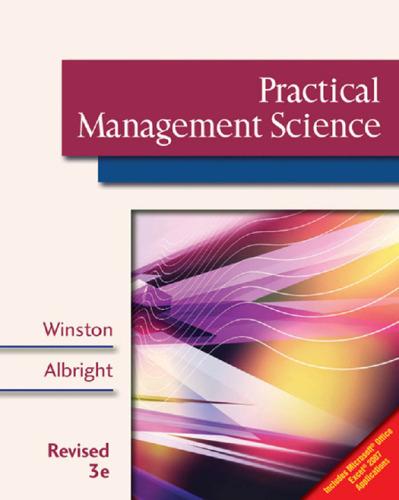Each emits two types of pollutants, labeled P1 and P2, into the river. If the waste from
Question:
Each emits two types of pollutants, labeled P1 and P2, into the river. If the waste from each factory is processed, the pollution in the river can be reduced. It costs $15 to process a ton of factory 1 waste, and each ton processed reduces the amount of P1 by 0.10 ton and the amount of P2 by 0.45 ton. It costs $10 to process a ton of factory 2 waste, and each ton processed will reduce the amount of P1 by 0.20 ton and the amount of P2 by 0.25 ton. It costs $20 to process a ton of factory 3 waste, and each ton processed will reduce the amount of P1 by 0.40 ton and the amount of P2 by 0.30 ton. The state wants to reduce the amount of P1 in the river by at least 30 tons and the amount of P2 by at least 40 tons.
a. Use Solver to determine how to minimize the cost of reducing pollution by the desired amounts.
b. Are the LP assumptions (proportionality, additivity, divisibility) reasonable in this problem?
c. Suppose you want to investigate the effects of increases in the minimal reductions required by the state. Specifically, you want to see what happens to the amounts of waste processed at the three factories and the total cost if both requirements
(currently 30 and 40 tons, respectively) are increased by the same percentage. Revise your model so that you can use SolverTable to investigate these changes when the percentage increase varies from 10% to 100% in increments of 10%.
Do the amounts processed at the three factories and the total cost change in a linear manner?
Skill-Extending Problems
Step by Step Answer:

Practical Management Science, Revised
ISBN: 9781118373439
3rd Edition
Authors: Wayne L Winston, S. Christian Albright






